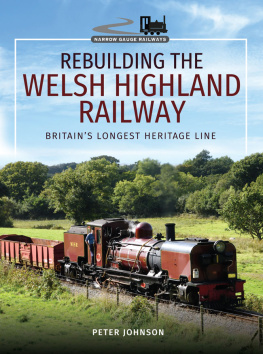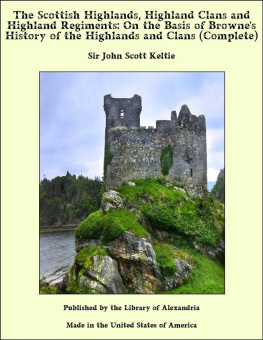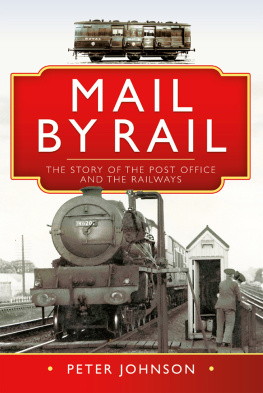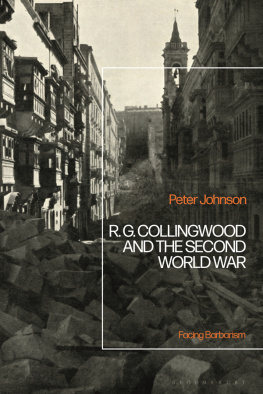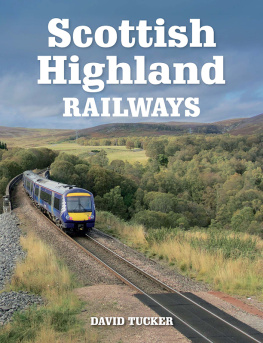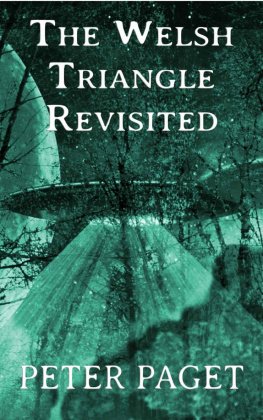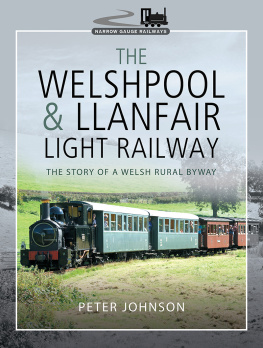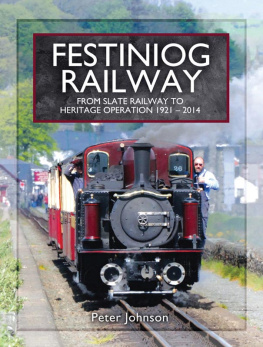Johnson Peter - Rebuilding the Welsh Highland Railway
Here you can read online Johnson Peter - Rebuilding the Welsh Highland Railway full text of the book (entire story) in english for free. Download pdf and epub, get meaning, cover and reviews about this ebook. year: 2018, publisher: Pen & Sword Books, genre: Detective and thriller. Description of the work, (preface) as well as reviews are available. Best literature library LitArk.com created for fans of good reading and offers a wide selection of genres:
Romance novel
Science fiction
Adventure
Detective
Science
History
Home and family
Prose
Art
Politics
Computer
Non-fiction
Religion
Business
Children
Humor
Choose a favorite category and find really read worthwhile books. Enjoy immersion in the world of imagination, feel the emotions of the characters or learn something new for yourself, make an fascinating discovery.
- Book:Rebuilding the Welsh Highland Railway
- Author:
- Publisher:Pen & Sword Books
- Genre:
- Year:2018
- Rating:5 / 5
- Favourites:Add to favourites
- Your mark:
- 100
- 1
- 2
- 3
- 4
- 5
Rebuilding the Welsh Highland Railway: summary, description and annotation
We offer to read an annotation, description, summary or preface (depends on what the author of the book "Rebuilding the Welsh Highland Railway" wrote himself). If you haven't found the necessary information about the book — write in the comments, we will try to find it.
Rebuilding the Welsh Highland Railway — read online for free the complete book (whole text) full work
Below is the text of the book, divided by pages. System saving the place of the last page read, allows you to conveniently read the book "Rebuilding the Welsh Highland Railway" online for free, without having to search again every time where you left off. Put a bookmark, and you can go to the page where you finished reading at any time.
Font size:
Interval:
Bookmark:

REBUILDING THE WELSH HIGHLAND RAILWAY
BRITAINS LONGEST HERITAGE LINE

FRONT COVER: Garratt No 138 climbing towards Tryfan Junction with the Irish Sea in the distance.
REAR COVER:
UPPER : The terminus of the North Wales Narrow Gauge Railways, Rhyd Ddu c1900.
LOWER: Volunteers laying track near Rhyd Ddu.
END PAPERS: The routes of the Welsh Highland Railway and the Ffestiniog Railway. (Gordon Rushton)
TITLE PAGE: One of the most impressive and admired features of the Welsh Highland Railway is its route through the Aberglaslyn Pass, viewed here from a high vantage point with Cnicht and the Moelwyns behind.
First published in Great Britain in 2018 by
Pen and Sword Transport
An imprint of Pen & Sword Books Limited
47 Church Street, Barnsley, South Yorkshire
S70 2AS
Copyright Peter Johnson, 2018
ISBN: 978 1 47382 727 1
eISBN: 978 1 47386 991 2
Mobi ISBN: 978 1 47386 990 5
The right of Peter Johnson to be identified as Author of this work has been asserted by him in accordance with the Copyright, Designs and Patents Act 1988.
A CIP catalogue record for this book is available from the British Library
All rights reserved. No part of this book may be reproduced or transmitted in any form or by any means, electronic or mechanical including photocopying, recording or by any information storage and retrieval system, without permission from the Publisher in writing.
Pen & Sword Books Limited incorporates the imprints of Atlas, Archaeology, Aviation, Discovery, Family History, Fiction, History, Maritime, Military, Military Classics, Politics, Select, Transport, True Crime, Air World, Frontline Publishing, Leo Cooper, Remember When, Seaforth Publishing, The Praetorian Press, Wharncliffe Local History, Wharncliffe Transport, Wharncliffe True Crime and White Owl.
For a complete list of Pen & Sword titles please contact
PEN & SWORD BOOKS LIMITED
47 Church Street, Barnsley, South Yorkshire, S70 2AS, United Kingdom
E-mail:
Website: www.pen-and-sword.co.uk
T he scene for the Welsh Highland Railways reconstruction is set in Part 1, with an account of the railways pre-history largely drawn from digitised newspapers available at Welsh Newspapers Online (newspapers.library.wales) and the British Newspaper Archive ( britishnewspaperarchive.co.uk ). These contain much that was previously unknown about the North Wales Narrow Gauge Railways, the Portmadoc, Beddgelert & Rhyd Ddu Light Railway proposal and the Portmadoc, Beddgelert & South Snowdon Railway.
Some information was drawn from Board of Trade and Ministry of Transport files held at the National Archives, Kew, from the Parliamentary Archives at the House of Lords, from Caernarvonshire County Council files held at Gwynedd Councils archives at Caernarfon, and the files of the Caernarvonshire County Councils solicitor, T.D. Jones, held at the National Library of Wales, Aberystwyth. Records deposited with Companies House were also consulted.
Information for the story of the railways reconstruction, in part 2, is drawn from papers accumulated while I was editor of the Festiniog Railway Magazine and a director of the Festiniog Railway Society, also from my regular contributions to Railway World and Steam Railway magazines, from 1991 and 1995 respectively, from Malcolm Highs collection of Welsh Highland Railway Construction Ltd papers, Michael Schumanns 1990s press cuttings collection, John Hopkins unpublished compendium of extracts from society magazines, the FR Companys annual reports, the Gwynedd County Council and the Snowdonia National Park Authority planning departments websites, the Daily Post website, and the late Ben Fishers excellent construction website, maintained for the public good by the Welsh Highland Railway Society. Some information was obtained in response to Freedom of Information requests made to the Welsh Government, Gwynedd Council, the Department of Transport and the Office of Rail and Road. This being within recent memory, a very small amount of information is contributed from my own knowledge.
The account of the reconstruction is illustrated with my own photographs. From 1997 until 2011 I had the privilege of being allowed to go onto the WHR trackbed while the works were in progress, being made welcome by contractors, railway employees and volunteers alike. Hence, I could take photographs from many locations that are now only accessible to railway employees on duty. It cannot be emphasised too much, therefore, that the publication of a photograph taken in a now-restricted location in this book is not an invitation for it to be duplicated by others.
A few illustrations that are technically deficient have been selected for their historical merit.
I wish to extend my grateful thanks to my friends and colleagues for their support while the railway was being rebuilt and while this book was being written: Michael Bishop, Clare Britton, Ed Castellan, Roland Doyle, Arie den Dulk, David Firth, Mike Hart, Malcolm High, Dave Kent, Peter Jarvis, Stuart McNair, John Padley, Stuart Render, Gordon Rushton, Michael Schumann, Alasdair Stewart, John Sutton, Jan Woods and Peter van Zeller. My sincere apologies to anyone I have overlooked.
I would particularly like to acknowledge the late John Keylock, whose enthusiasm for the WHR was boundless, and Rodney Weaver and Dan Wilson, who never lived to see its restoration finished.
Sadly, the publisher did not share my enthusiasm for illustrating the book with 500 images so I had to scale back my ambitions in this regard.
Crown Copyright is reserved in the images based on Ordnance Survey mapping. Unacknowledged images are from my collection and post-1980s photographs were taken by me.
Unless stated otherwise, any opinions are also mine and should not be attributed to the Festiniog Railway Company or any of the other organisations referred to. Responsibility for any errors must remain with me.
Peter Johnson
Leicester
May 2018

Garratt No 143 traverses an embankment built by the Portmadoc, Beddgelert & South Snowdon Railway in 1905 as it leaves the Aberglaslyn pass towards Beddgelert on 21 April 2012. (Author)
U ntil the 1970s many Welsh place names existed in Welsh and English versions, the latter often used in official documents and newspapers. For reasons of continuity, the Welsh forms have been adopted throughout this book, except in rendering the names of public authorities.
Those affected are: Bettws Garmon/Betws Garmon, Bettws y Coed/Betws y Coed, Carnarvon/Caernarfon, Quellyn/Cwellyn, Portmadoc/Porthmadog, Waenfawr/Waunfawr.
The Festiniog Railway Company was named thus by its 1832 Act of Parliament. Ffestiniog Railway is used in marketing and here for modern era references.

At Rhyd Ddu, an Edwardian couple admire Snowdon Ranger , one of the Fairlie-patent locomotives ordered by H.B. Roberts and delivered to the North Wales Narrow Gauge Railways in 1875.
A t midday on 30 October 2010, a crowd of several hundred excited people gathered on Porthmadogs Britannia Bridge, waiting for a train. It was a bright autumnal day, although there had been a shower earlier. At 12.15, a little later than expected, traffic alarms warbled and signs started flashing, a jubilant steam locomotive whistle confirming what they were waiting for, the arrival of the first Welsh Highland Railway train carrying passengers from Caernarfon. The delighted crowd waved excitedly as they watched it rumble across the bridge to reach the Ffestiniog Railways station by the harbour.
Font size:
Interval:
Bookmark:
Similar books «Rebuilding the Welsh Highland Railway»
Look at similar books to Rebuilding the Welsh Highland Railway. We have selected literature similar in name and meaning in the hope of providing readers with more options to find new, interesting, not yet read works.
Discussion, reviews of the book Rebuilding the Welsh Highland Railway and just readers' own opinions. Leave your comments, write what you think about the work, its meaning or the main characters. Specify what exactly you liked and what you didn't like, and why you think so.

